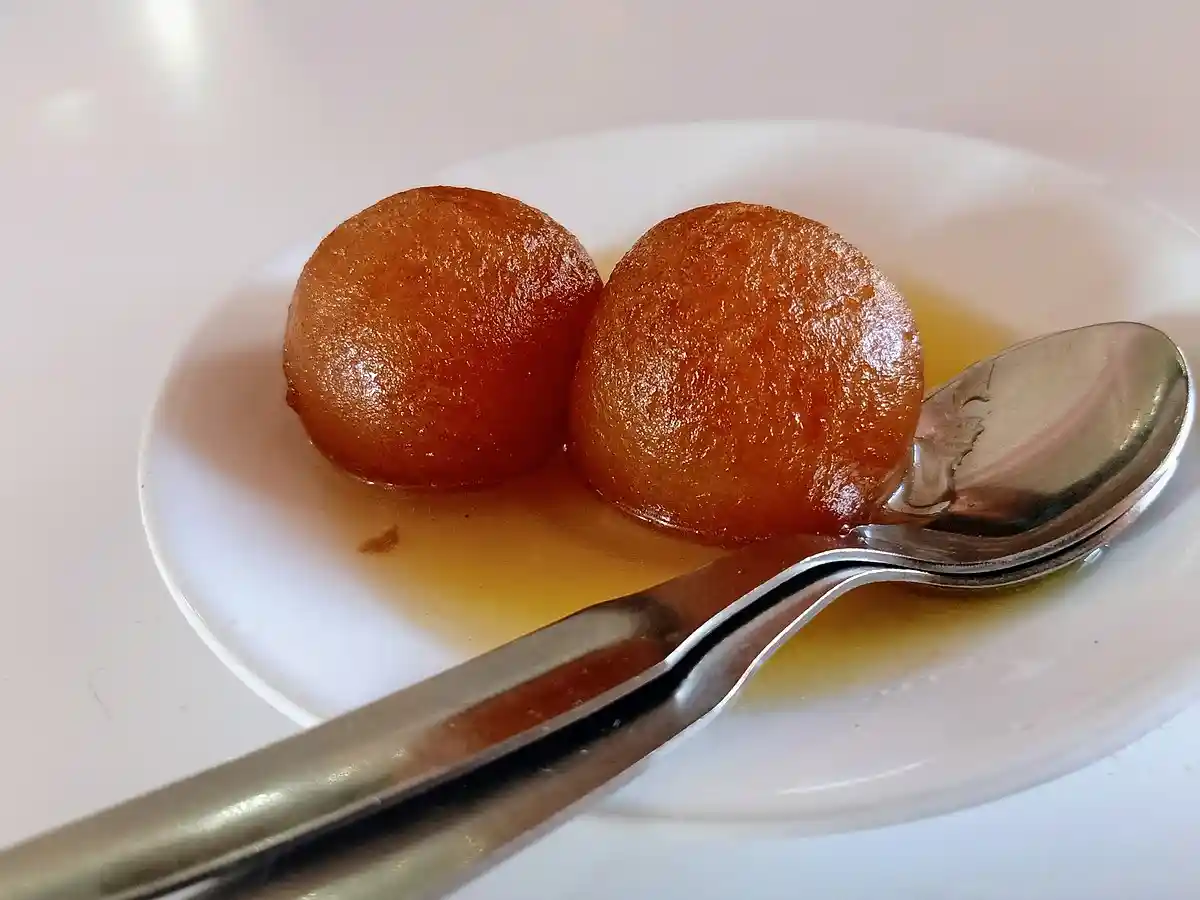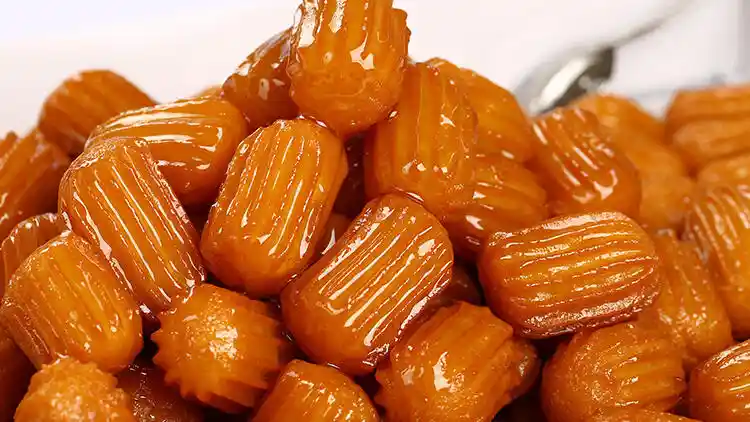The sweet story of Gulab Jamun
It is highly unlikely that there is anyone who doesn’t like Gulab Jamun. Be it a promotion or a wedding; it's hard to imagine any celebration without this sweet, sinful dessert. Gulab Jamun is an important part of India’s extensive gastronomy. How did it become ubiquitous in our plates and our cultures?

Gulab Jamun, the unofficially official dessert of India; Image Source: Wikimedia Commons
One of the most popular legends reveal that the Gulab Jamun was accidentally prepared in Mughal Emperor Shah Jahan’s cookhouse by his personal chef. The dessert was inspired by name Persian and Turkish traditional desserts called bamieh and tulumba respectively. With the exception of being served cold, both of these desserts are essentially lumps of unleavened dough, which is first fried and then soaked in sugar syrup, similar to the Gulab Jamun.
Gulab Jamun has been a part of our world for so long that it is almost impossible to pinpoint its exact origin. Over time, it has managed to become a significant part of our cultures, making its appearances here and there, on every occasion, celebration, or sometimes solely for the purpose of a sweet indulgence. The best way to enjoy this fabulous dessert is by fully embracing it in its natural form and by indulging in its equally mouth-watering regional and modern variations, including Gulab Jamun mousse, Gulab Jamun cheesecake, and Gulab Jamun Icecream.
In the late 1850s, Calcutta’s ace confectioner was given a pivotal task that changed the story of India’s favourite mithai, Gulab Jamun. Bhim Chandra Nag had to prepare a dessert for Lady Canning the wife of Governor General Lord Charles Canning while she was visiting India with her husband. Thus, Ledikini, the beloved dessert from Kolkata was born. It is a distant cousin of Gulam Jamun with a slightly different shape.
The way Ledikeni got its name can be called a charming case of mispronunciation. As soon as Lady Canning tasted the sweet, sinful dessert, she was in awe of it’s taste. Lady Canning became so fond of the dessert that she started serving it on all occasions and parties hosted by her, which contributed popularising it all across Bengal.
The name Ledikeni came from her own name ‘Lady Canning’, just mispronounced.
From Jalebi to Rasgulla, Indian desserts have a legacy of their own, making every single mithai a delight to devour with its richness and flavor. Such is the legacy of tasteful tale of Gulab Jamun, one of the most beloved desserts of the country. It is a milk solids-based confection made primarily from 'khoya', which is milk reduced to the consistency of a soft dough. Modern versions of the recipe suggest using dry powder or milk powder instead of khoya. Gulab jamun is often topped with dried fruits such as almonds and cashews to enhance flavor.
Gulab Jamun constitues two words; the word "Gulab" derives from the Persian words gol (flower) and ab (water), attributed to the fragrant syrup of rose water, and the word "Jamun", meaning black plum, which is an Indian fruit having similar size and shape.
Courtesy of food folklore, there are many interesting stories concerning the history and origin of Gulab Jamun.
In his book, The Donut: History, Recipes, and Lore from Boston to Berlin, Michael Krondl, who is a culinary historian, writes about how Persian invaders brought a “round fritter that eventually became gulab jamun” with them.
He further comments “The [Indian] recipe is more complex than in the Middle East, requiring a mixture of dried and fresh milk thickened with flour. But as in Iran, the mixture is fried and soaked in rosewater syrup”.
One of the stories theorise that the origin of Gulab Jamun is inspired by Luqmat-al-qadi, a similar dessert which is a popular Arabic dessert with its roots in Mediaval Iran. It is prepared by dipping deep fried dough balls in honey and sprinkling them with sugar afterwards.

Lidekini, named after the (mispronunciation) Lady Canning; Image Source: istockphotos

Bamieh and Tulumba, both the desserts are identical; Image Source: PersianGood


